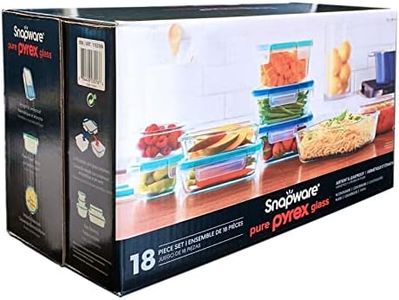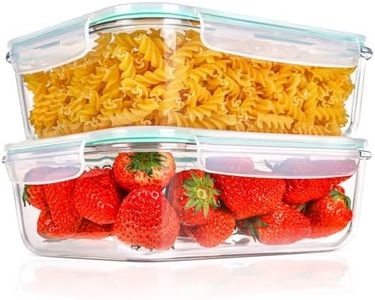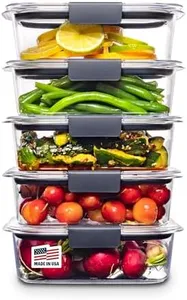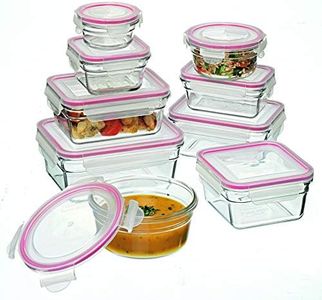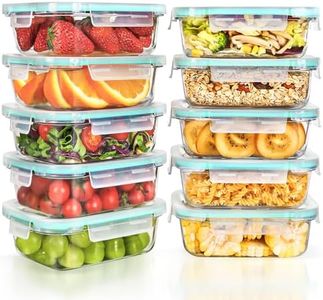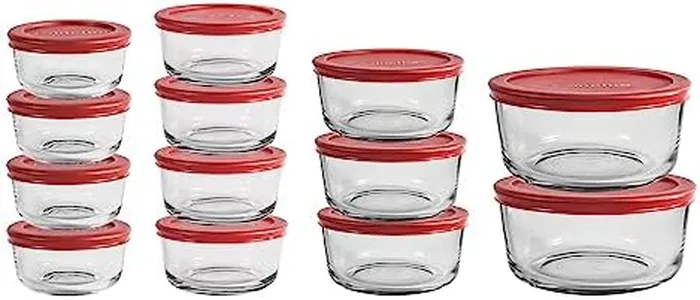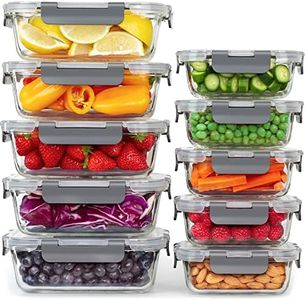We Use CookiesWe use cookies to enhance the security, performance,
functionality and for analytical and promotional activities. By continuing to browse this site you
are agreeing to our privacy policy
10 Best Glass Food Storages
From leading brands and best sellers available on the web.Buying Guide for the Best Glass Food Storages
Choosing the right glass food storage container is key to keeping your food fresh, organized, and safe. Glass containers are popular for their durability, safety, and the fact that they don’t retain stains or odors like some plastics. When selecting a glass food storage container, pay attention to features that match your lifestyle, how you plan to use the containers, and your storage needs in the kitchen.Glass TypeThe type of glass used often determines durability and safety. Most glass food storage containers are made from either regular soda-lime glass or borosilicate glass. Soda-lime glass is common, sturdy, and affordable but can be more prone to breaking with temperature changes. Borosilicate glass is more resistant to thermal shock, making it better for moving directly from fridge to oven, but is sometimes more expensive. If you often heat leftovers or move containers from cold to hot environments, opt for borosilicate. For general food storage, soda-lime glass is usually enough.
Lid Material and SealThe lid creates an airtight seal, keeping food fresh and preventing leaks. Lids can be plastic, silicone, or glass, and may feature snap-locks or simple press-fit designs. Snap-lock lids with silicone gaskets generally offer the best leak-proof seal, suitable for liquids and transporting food. Plastic lids are lightweight and durable, while glass lids may offer a single-material solution but are less common and can break. If you plan to store soups or carry food, choose leak-proof seals. For fridge organization, a simple fit may be sufficient.
Capacity and ShapeContainers come in various sizes and shapes, like rectangular, square, or round. Capacity ranges from small (good for dips and sauces), medium (ideal for leftovers and lunches), to large (perfect for family portions or meal prep). Rectangular and square shapes use space efficiently in the fridge and stack well, while round shapes are easier for mixing or storing certain foods. Consider how much food you typically store and your available kitchen space. Choose a mix of sizes for flexibility, or match shapes to your storage preferences.
StackabilityStackability refers to how well the containers nest inside each other or stack with lids in place. Good stackability saves fridge and pantry space and keeps storage neat. Some containers are designed to nest for easy storage when not in use, while others stack securely when full, preventing spills. If you have limited storage space, prioritize stackable sets. If you value easy access to individual containers over compact storage, this may be less important.
Oven, Microwave, and Freezer SafetyGlass containers can often go from freezer to microwave or oven, but not all glass handles extreme temperature changes. Borosilicate is best for heating and baking, while soda-lime glass is usually for fridge and freezer only. Check if the lid is microwave- or oven-safe—plastic lids often aren’t. If you plan on reheating or baking in the container, confirm it’s rated for such use. For freezer storage, make sure the glass can withstand freezing without cracking.
Ease of CleaningMost glass containers are dishwasher safe, making cleaning easy. The complexity of the lid—especially those with seals or parts—can affect cleaning. Simple one-piece lids are easier to clean, while intricate seals require extra attention to prevent buildup. If you want hassle-free cleaning, opt for containers with fewer lid parts and dishwasher-safe designs.


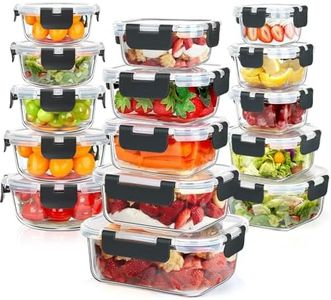

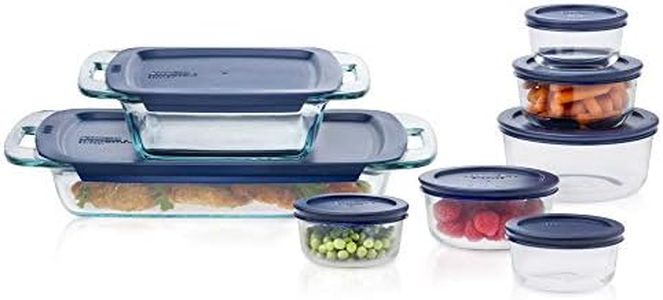
![GOOD FOR YOU Glass Meal Prep Containers - [5 Pack] - Glass Storage containers, airtight - Food prep containers with lids - Glass Food containers with lids - Glass Lunch Box](https://images-proxy.bestreviews.guide/H2Spe9wZU7ay1ZnE9kLdZHbPndI=/0x300/https://m.media-amazon.com/images/I/51G3pRfECvL._AC_CX679_.jpg)
